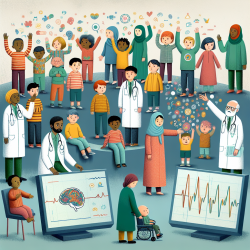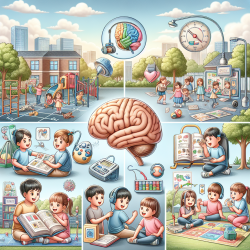Introduction
In the realm of pediatric epilepsy, the use of antiepileptic drugs (AEDs) is a cornerstone of treatment. However, the intersection of AEDs and psychopathology presents a complex challenge for practitioners. The research article "Psychopathology in Pediatric Epilepsy: Role of Antiepileptic Drugs" by Rochelle Caplan provides a comprehensive exploration of this topic, shedding light on the nuanced relationship between AEDs and behavioral changes in children with epilepsy.
Key Findings from the Research
The study highlights several critical insights:
- Behavioral Side Effects: AEDs can have varying effects on children's behavior, with some drugs potentially triggering depression, anxiety, or hyperactivity. The heterogeneity of AEDs complicates the ability to generalize these effects across all medications.
- Methodological Challenges: Conducting large-scale studies to isolate the effects of specific AEDs is difficult due to the diverse drug combinations and individual patient variables, such as IQ and seizure control.
- Psychiatric Comorbidities: Children with epilepsy often present with psychiatric comorbidities, making it challenging to distinguish whether behavioral issues are drug-induced or related to the underlying condition.
Implications for Practitioners
For practitioners, understanding these findings is crucial in improving treatment outcomes. Here are some strategies to consider:
- Comprehensive Assessment: Conduct thorough assessments that include psychiatric evaluations to differentiate between AED side effects and epilepsy-related psychopathology.
- Monitor Behavioral Changes: Pay close attention to behavioral changes following the initiation or adjustment of AEDs. This can help in identifying potential adverse effects early.
- Collaborative Approach: Work closely with families to gather detailed timelines of behavioral changes, which can aid in distinguishing between drug effects and other factors.
Encouraging Further Research
The study underscores the need for more targeted research to unravel the complexities of AEDs and psychopathology in pediatric epilepsy. Future studies should focus on:
- Large-scale, prospective studies that can better isolate the effects of individual AEDs.
- Inclusion of control groups without epilepsy to provide comparative data.
- Utilizing structured psychiatric interviews and validated instruments to assess behavioral changes.
Conclusion
Understanding the intricate relationship between AEDs and psychopathology in children with epilepsy is vital for practitioners aiming to optimize treatment strategies. By integrating comprehensive assessments and fostering collaborative relationships with families, practitioners can better navigate the challenges posed by AEDs. This research serves as a call to action for further studies that can provide clearer insights into the effects of AEDs on pediatric patients.
To read the original research paper, please follow this link: Psychopathology in Pediatric Epilepsy: Role of Antiepileptic Drugs.










